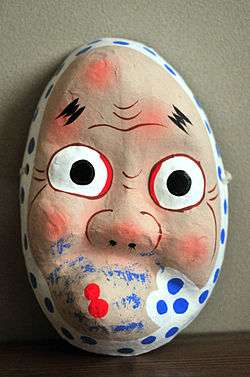Definify.com
Definition 2025
嘯
嘯
| ||||||
|---|---|---|---|---|---|---|
Translingual
Han character
嘯 (radical 30 口+12, 15 strokes, cangjie input 口中X (RLX), four-corner 65027, composition ⿰口肅)
References
- KangXi: page 206, character 32
- Dai Kanwa Jiten: character 4246
- Dae Jaweon: page 429, character 31
- Hanyu Da Zidian: volume 1, page 694, character 11
- Unihan data for U+562F
Chinese
| trad. | 嘯 | |
|---|---|---|
| simp. | 啸 | |
Glyph origin
| Characters in the same phonetic series (肅) (Zhengzhang, 2003) | |
|---|---|
| Old Chinese | |
| 簫 | *sɯːw |
| 蕭 | *sɯːw |
| 瀟 | *sɯːw |
| 潚 | *sɯːw, *sɯwɢ |
| 彇 | *sɯːw |
| 蟰 | *sɯːw, *sɯwɢ |
| 橚 | *sɯːw, *sɯwɢ |
| 嘯 | *sɯːwɢs |
| 歗 | *sɯːwɢs |
| 熽 | *sɯːwɢs |
| 繡 | *sɯwɢs |
| 鏽 | *sɯwɢs |
| 肅 | *sɯwɢ |
| 鷫 | *sɯwɢ |
| 驌 | *sɯwɢ |
| 鱐 | *sɯwɢ |
| 璛 | *sɯwɢ |
Pronunciation
- Mandarin
- (Standard Chinese, Beijing)+
- Pinyin:
- Zhuyin: ㄒㄧㄠˋ
- Wade-Giles: hsiao4
- Gwoyeu Romatzyh: shiaw
- IPA (key): /ɕi̯ɑʊ̯⁵¹/
- (Standard Chinese, Beijing)+
- Cantonese
- (Standard Cantonese, Guangzhou)+
- Jyutping: siu3
- Yale: siu
- Cantonese Pinyin: siu3
- IPA (key): /siːu̯³³/
- (Standard Cantonese, Guangzhou)+
- Min Nan
- (Hokkien)
- Pe̍h-ōe-jī: siàu
- Tâi-lô: siàu
- Phofsit Daibuun: siaux
- IPA (Xiamen): /ɕiaʊ²¹/
- IPA (Quanzhou): /ɕiaʊ⁴¹/
- IPA (Zhangzhou): /ɕiaʊ²¹/
- IPA (Taipei): /ɕiaʊ¹¹/
- IPA (Kaohsiung): /ɕiaʊ²¹/
- (Hokkien)
| Rime | |
|---|---|
| Character | 嘯 |
| Reading # | 1/1 |
| Initial (聲) | 心 (16) |
| Final (韻) | 蕭 (93) |
| Tone (調) | Departing (H) |
| Openness (開合) | Open |
| Division (等) | IV |
| Fanqie | 蘇弔切 |
| Reconstructions | |
| Zhengzhang Shangfang |
/seuH/ |
| Pan Wuyun |
/seuH/ |
| Shao Rongfen |
/seuH/ |
| Edwin Pulleyblank |
/sɛwH/ |
| Li Rong |
/seuH/ |
| Wang Li |
/sieuH/ |
| Bernard Karlgren |
/sieuH/ |
| Expected Mandarin Reflex |
xiào |
| Baxter-Sagart system 1.1 (2014) | |
|---|---|
| Character | 嘯 |
| Reading # | 1/1 |
| Modern Beijing (Pinyin) |
xiào |
| Middle Chinese |
‹ sewH › |
| Old Chinese |
/*sˤiw(k)-s/ |
| English | to wail |
Notes for Old Chinese notations in the Baxter-Sagart system: * Parentheses "()" indicate uncertain presence; | |
| Zhengzhang system (2003) | |
|---|---|
| Character | 嘯 |
| Reading # | 1/1 |
| No. | 12120 |
| Phonetic component |
肅 |
| Rime group |
奧 |
| Rime subdivision |
2 |
| Corresponding MC rime |
嘯 |
| Old Chinese |
/*sɯːwɢs/ |
Definitions
嘯
- This term needs a translation to English. Please help out and add a translation, then remove the text
{{rfdef}}.
Compounds
Japanese
Kanji
- to whistle
Readings
- Goon: しょう (shō), (historical) せう (seu)
- Kan’on: しょう (shō), (historical) せう (seu)
- Kun: うそ (uso), うそふき (usofuki), うそぶ (嘯ぶ, usobu) (classical), うそぶく (嘯く, usobuku), うそぶき (usobuki), うそぶき (嘯き, usobuki), うそむ (嘯む, usomu) (classical), うそむく (嘯く, usomuku) (classical), ふく (嘯く, fuku) (rare)
Compounds
|
Etymology 1
From Old Japanese. Appears in poem 1753 of the Man'yōshū, a poetry compilation completed around 759 CE, in the compound form 嘯鳴 (usobuki; see below).
Pronunciation
Noun
Derived terms
Etymology 2

| Kanji in this term |
|---|
| 嘯 |
|
うそふ(き) Hyōgaiji |
| kun'yomi |
Compound of 嘯 (uso, “whistle, whistling”) + 吹き (fuki, “blowing”, the 連用形 (ren'yōkei, “continuative or stem form”) of verb 吹く fuku, “to blow”).[1][2]
Pronunciation
Alternative forms
- 嘯吹
Noun
嘯 (hiragana うそふき, romaji usofuki)
- the clownish “whistling” mask used in 狂言 (kyōgen, “a farce performed between noh plays”, literally “crazy talk”)
Synonyms
- ひょっとこ (hyottoko)
Etymology 3
| Kanji in this term |
|---|
| 嘯 |
|
うそぶ(き) Hyōgaiji |
| kun'yomi |
Originally a compound of 嘯 (uso, “whistle, whistling”) + 吹き (fuki, “blowing”, the 連用形 (ren'yōkei, “continuative or stem form”) of verb 吹く fuku, “to blow”).[1][2]The fuki changes to buki as an instance of rendaku (連濁).
Pronunciation
Noun
嘯 (hiragana うそぶき, romaji usobuki)
Derived terms
References
- 1 2 1988, 国語大辞典(新装版) (Kokugo Dai Jiten, Revised Edition) (in Japanese), Tōkyō: Shogakukan
- 1 2 3 2006, 大辞林 (Daijirin), Third Edition (in Japanese), Tōkyō: Sanseidō, ISBN 4-385-13905-9
Korean
Hanja
嘯 • (so) (hangeul 소, revised so, McCune-Reischauer so)
- This term needs a translation to English. Please help out and add a translation, then remove the text
{{rfdef}}.
Vietnamese
Han character
嘯 (khiếu)
- This term needs a translation to English. Please help out and add a translation, then remove the text
{{rfdef}}.